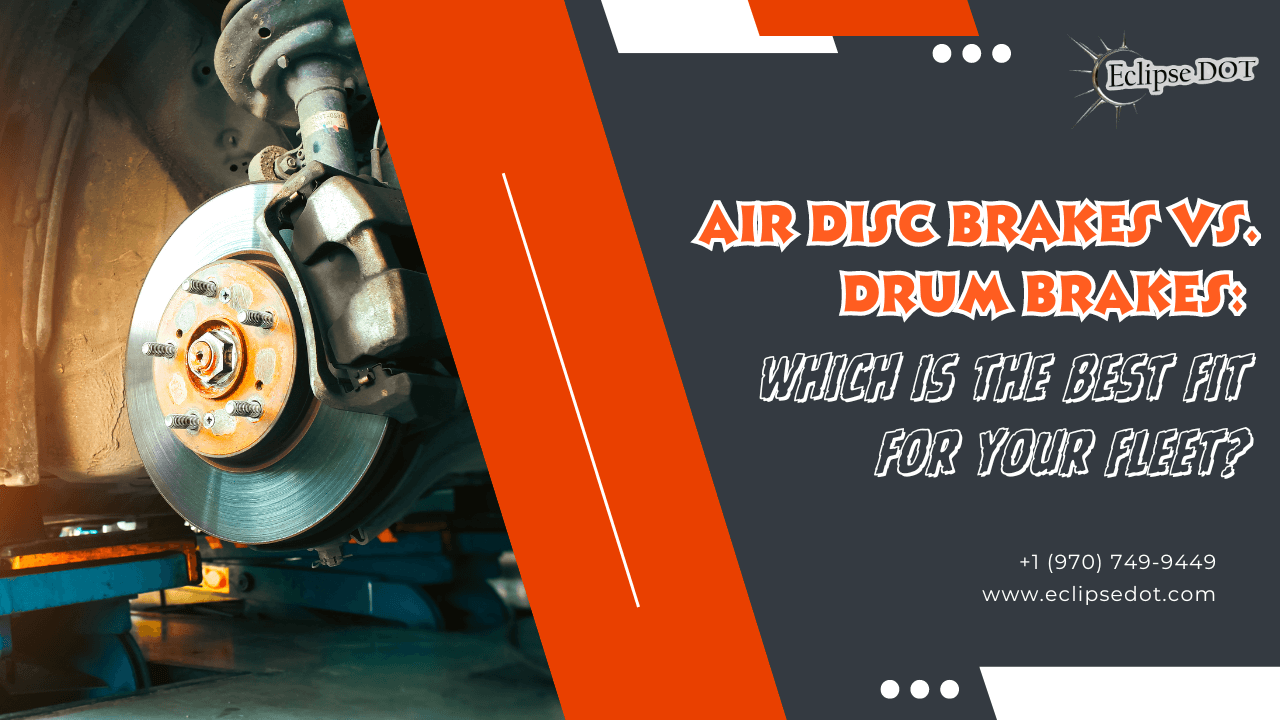When it comes to choosing the right brake system for your commercial fleet, it’s essential to understand the strengths and weaknesses of both air disc brakes and drum brakes. Think of it as choosing the right tool for the job – each option has its own unique benefits.
The Classics: Drum Brakes
Drum brakes have been around since the late 1800s and were the go-to braking system for decades. They’re like the trusty old hammer – reliable, cost-effective, and durable. Here’s why drum brakes might still be a good fit for your fleet:
Advantages of Drum Brakes:
- Cost-Effective: Drum brakes are generally cheaper to produce and replace, making them an economical choice for many fleets (The Motor Guy) (GoodCar).
- Durability: These brakes excel in abrasive and heavy-duty environments, such as construction sites, due to their resistance to wear and tear (Engineering Choice).
- Maintenance: With fewer moving parts and a simpler design, drum brakes are often easier to service and rebuild by entry-level technicians (The Motor Guy).
However, drum brakes aren’t without their drawbacks. They can be more prone to issues like contamination and require more frequent maintenance checks. During the Commercial Vehicle Safety Alliance’s Brake Safety Week, a significant number of vehicles with drum brakes failed inspections due to cracks and worn parts (Engineering Choice).
The Modern Marvel: Air Disc Brakes
Air disc brakes are the cutting-edge choice – offering superior performance and consistency. They’re like the latest high-tech gadget, providing better stopping power, more consistent braking, and less brake fade. Here’s why air disc brakes could be the perfect fit for your fleet:
Advantages of Air Disc Brakes:
- Superior Stopping Power: Disc brakes apply more braking force quicker, resulting in shorter stopping distances – crucial for safety (NAPA Know How) (Engineering Choice).
- Heat Management: Disc brakes dissipate heat more efficiently, reducing the risk of brake fade and maintaining performance even in demanding conditions (GoodCar) (Engineering Choice).
- Wet Performance: These brakes perform better in wet conditions, making them a reliable choice regardless of the weather (Engineering Choice) (NAPA Know How).
- Lower Long-Term Costs: Despite higher initial costs, air disc brakes can offer lower total cost of ownership over time due to fewer maintenance needs and longer-lasting components (The Motor Guy) (NAPA Know How).
Mark Holley from Bendix notes that air disc brakes also lead to fewer CVSA violations because the adjustment mechanism is internal, making them less prone to inspection issues. Despite the higher initial costs, the total cost of ownership is often lower in the long run.
Challenges of Air Disc Brakes:
- Higher Initial and Repair Costs: The initial cost and complexity of repairs can be higher compared to drum brakes (GoodCar) (Engineering Choice).
- Technician Training: Proper training is essential to maintain and repair air disc brakes effectively.
- Performance in Abrasive Environments: They might not perform as well in very abrasive environments compared to drum brakes (NAPA Know How) (The Motor Guy).
Real-World Experiences and Future Outlook
Brent Hilton from Maverick Transportation shares that his fleet has been using air disc brakes on trucks since 2019 and trailers since 2008. While initial pad-wear projections were high, real-world results showed a need for closer attention to maintenance and supply chain conditions. Despite these challenges, the future looks bright for air disc brakes, especially with the rise of electric vehicles and advancements in brake technology.
Conclusion
Both air disc and drum brakes have their unique benefits and challenges. The key is to evaluate your fleet’s specific needs and conditions to make the best choice. Whether you go with the reliable, cost-effective drum brakes or the high-performance air disc brakes, a robust inspection and maintenance program is crucial to keep your fleet running smoothly.
For more detailed insights, check out our comprehensive guide and make an informed decision that best suits your fleet’s requirements.
Gain exclusive access to our CDL & DOT Compliance articles with a trial at DOTDocs.com. And don’t forget to claim your FREE micro audit at THE ECLIPSE DOT MICRO AUDIT. Ready for seamless operations? Discover the difference today!


